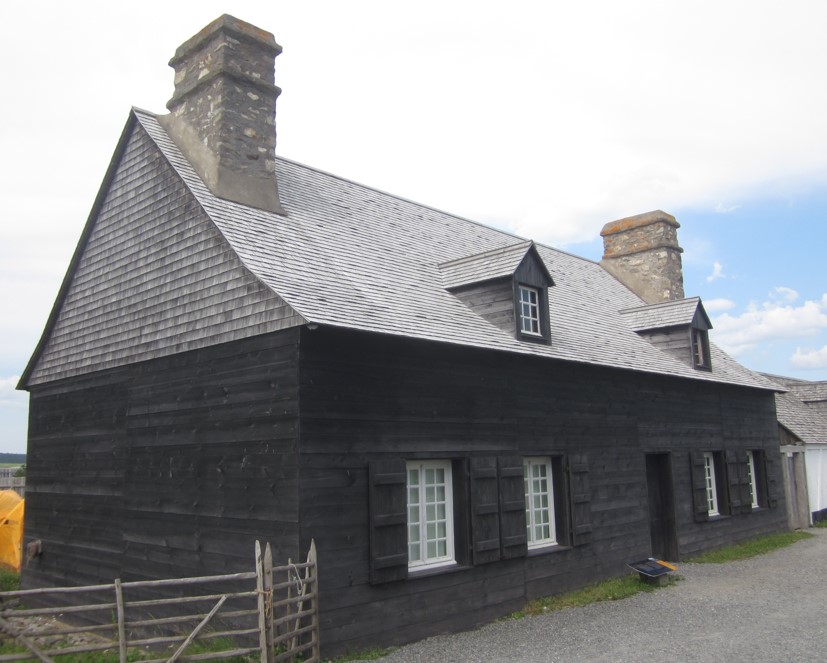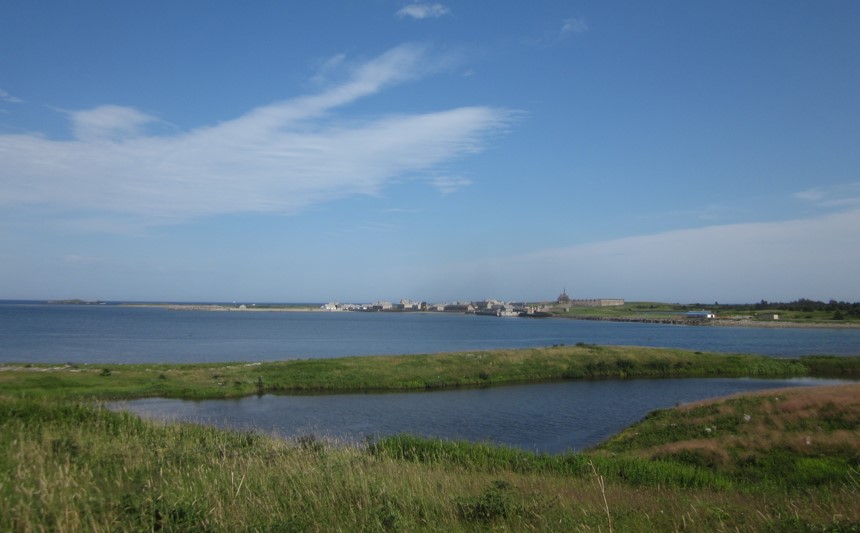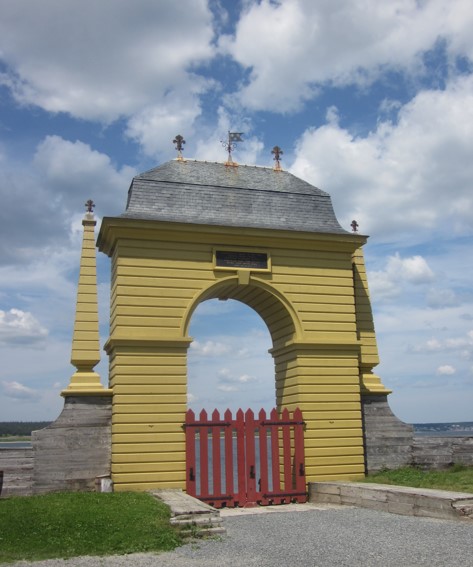See Part I here.
As we read through imperial correspondence, we begin to understand why, despite security concerns, early British Acadia was also the golden-age Acadia of our historical imagination. We can sense British governors’ frustration not with the Acadian people so much as their own superiors in London. Richard Philipps, a long-time absentee governor, complained in 1720 that he had to reach into his own pocket—rather than receive imperial funding—for presents to facilitate a relationship of trust and exchange with the Natives. He added: “I find this Country in no likelyhood of being settled under the Kings obedience upon the footing it is, and therefore it is necessary that the Government at home exert itself a little, and be at some extraordinary expence, for this has been hitherto no more than a mock Goverment: its authority haveing never yet extended beyond Cannon reach of this ffort.” The Acadians were tilling and putting up new buildings and, Philipps stated, “flatter themselves that the King’s affaires here will allwayes continue in the same feeble State.”
To be sure, this was not a perfectly benign regime that was willing to let the situation endure. Philipps came to believe that Acadians’ fear of the Natives was a pretense meant to stall efforts to impose an oath of allegiance and prevent forced removal—and a deportation was, in December 1720, a scenario explicitly contemplated by the Board of Trade. But, between 1714 and 1740, the Acadian people benefited from one immeasurable advantage: the longest period of peace between France and Britain in America. The security and fate of Nova Scotia, a colony of little commercial value, were not vital concerns of imperial decision-makers, such that the removal contemplated by the Board of Trade seems to have languished with no clear means of carrying it into effect.
A letter of Lieutenant Governor Lawrence Armstrong hints at the kind of grudging recognition that would develop in Quebec following the British conquest. By the early 1730s, a system of informal representation had arisen; Acadian “deputies” regularly traveled to Annapolis to advocate for their communities. Armstrong sought permission to appoint Acadian justices of the peace to tighten the relationship between the people and their rulers. With a greater stake in colonial affairs through representation, the governor stated, “they in time may be perhaps brought through their own free and voluntary acts to pay a greater obedience to the Government, and contribute to its support [through taxation].” In fact, it was under Philipps’ and Armstrong’s joint tenure that the Acadians of the Annapolis Valley signed a pledge of allegiance to which they added their own conditions, including neutrality in times of war and the right to sell their lands and to settle elsewhere. The colonial council was outraged to find that the officer who circulated the oath had allowed Acadians to add these caveats—it seemed to set a poor precedent and open the door to misunderstandings. Yet, Armstrong opted not to condemn the conditional oath, because he saw it as a crucial first step towards the cooptation of Acadians as obedient British subjects.

There were other signs of tentative and hesitant cooperation between rulers and ruled. In 1732, Armstrong communicated with the French governor of Louisbourg and the bishop of Quebec to obtain, for this Acadian population, Catholic priests, as long as they did “not prove the fomentors of Discord.” Historian Naomi Griffiths depicts the British lieutenant governor as “opinionated, prejudiced, cantankerous, capricious, and a constant trial to his companions at Annapolis Royal.” On the other hand, Griffiths states, “he had an original mind and a considerable, if undisciplined, intelligence” (2005, 320). Armstrong was a realist who, amid the petty infighting of the colonial elite, tried to make the existing arrangement between Acadians and Britain work.
We won’t say that the Acadians were fortunate to have such officials as Philipps, Armstrong, and Paul Mascarene, the French-speaking Huguenot who served as a translator and presided over the colonial council for a decade. After all; their actions were not disinterested; they were agents of empire. They were conscious of the limits of their power and wished to avoid pushing Acadians into the French camp. On the other hand, these were pragmatic leaders who valued conciliation over dispossession. It follows that we should not read back in time as inevitable the Deportation. The Acadia of the 1730s could have become the Province of Quebec of the 1790s, with French-heritage settlers’ religious and political rights grudgingly recognized in law. The Deportation had to be decided upon—it was the result of specific decisions taken, through a process of escalation, during the 1740s and early 1750s.
As for Acadian society in this period, concerns about safety and imperial rivalries were easily overshadowed by the daily preoccupations and toils of an early modern agricultural settlement. “Economically,” historian Geoffrey Plank states, “the years from 1726 through 1743 were good for the Acadians. They reclaimed new lands from the sea, expanded their settlements in the eastern Bay of Fundy region, and put additional acreage under cultivation near Annapolis Royal and on a smaller scale further [sic] afield, in present-day New Brunswick” (2001, 88). This reflected the rapid growth of the population, which appears to have reached 10,000 inhabitants in the mid-1740s. Commercial opportunities with neighboring colonies—from New England to Cape Breton—also developed. This Acadian world was not particularly different from the St. Lawrence River valley, save perhaps that it was more cosmopolitan.
In this weakly governed colony, despite growing commerce, Acadians had to be collectively self-sufficient and social cohesion was essential to their ability to thrive. Large building projects—houses, barns, windmills, and dykes—required but also reinforced this community spirit. So did marriage bonds and religious festivals. John Mack Faragher adds, similarly, that “[t]he favorite forms of entertainment were public” and thus communal; these included singing, storytelling, and shivarees (charivaris) (2005, 190). If this was a happy and flourishing society by the standards of the eighteenth century, we should avoid Longfellow-style romanticization that turns sophisticated Acadians, who were not strangers to social conflict, into innocent wards somehow frozen in time.
Faragher vividly depicts Acadian society in this period. He also traces the politics of British Acadia or Nova Scotia through its entire history. This long-term context, some of which I share here, is in fact essential to our understanding of the deportation. We should not, however, confuse this context with the actual causes of the Grand Dérangement. We must situate those causes on a shorter time scale and set them against the near-continuous colonial warfare from 1744 to 1760. It was the renewal of conflict with France and Indigenous nations in 1744 that turned the neutral Acadians from a benign presence into a security threat.

Britain went to war with Spain in 1739. It seemed it was only a matter of time until France saw an opportunity to enter the conflict and perhaps make gains at the expense of Britain. In the early 1740s, officials at Louisbourg and at Annapolis Royal planned for war with the limited resources at their disposal. Finally, news of a declaration of war reached America in May 1744. From Louisbourg, French forces were quick to pounce. They seized Canso and moved decisively into the Beaubassin region. Yet, French success was not such as to instantly rally Acadians to their side. Very early, French authorities worried that the Mi’kmaq were spending more time harassing the Acadian population and driving their cattle away than confronting the British. Yet the French soldiers were not above exerting their own pressures. In the Grand-Pré and Minas area, the French officer François Du Point Duvivier acted “imperiously,” as Griffiths states (340), demanding various goods from the local Acadian settlers and threatening to unleash the Natives if his requests were not promptly met. A group of leading residents begged to retain the grain and meat that would enable them to survive the next winter. They also stated, “We live under a mild and tranquil government, and we have all good reason to be faithful to it. We hope therefore, that you will have the goodness not to separate us from it; and that you will grant us the favour not to plunge us into utter misery.”
Despite this mild protest, there was little doubt that the Acadians would bend according to the winds of war, in light of the immediate threats to their families. Paul Mascarene, who followed Armstrong at Annapolis, seemed to understand this, and in fact appreciated the restraint practiced by the Acadians while regular French forces and Indigenous allies moved towards the British fort. In Mascarene’s case, familiarity did not breed contempt. But, elsewhere, for military reasons, the Acadian presence was increasingly perceived as problematic. The French at Louisbourg thought these Acadian subjects were not pulling their weight. In Massachusetts, whose military support and supplies were essential to the survival of the British garrison of Annapolis, officials believed this population posed a threat by virtue of a primordial allegiance to France.
The governor of Massachusetts, William Shirley, parlayed the considerable resources he could muster into influence over British policy in eastern North America. Shirley wished to do away with the Acadians entirely. That pressure seems reflected in a memo to the Board of Trade dated November 1745 that recommended the wholesale displacement of this agricultural population. Bowing to pressure, Mascarene signed the memo, but also sent Shirley private reservations. There was certainly a sprinkling of humanitarian feeling in this missive but, more to the point, Mascarene worried about the logistical challenges of deportation and the simple fact that such a radical measure would push the Acadians into French arms—French arms in all meanings of the word.

The tide of war turned unexpectedly in 1745. Gathering troops and ships from Massachusetts and from neighboring colonies, Shirley led a successful siege of Louisbourg, which surrendered in June. That only increased his political capital and influence. News of this British victory—won without substantial metropolitan support—was greeted with surprise on both sides of the Atlantic. An expedition from Quebec reasserted a French military presence in central Nova Scotia in 1746-1747, again placing great strain on Acadian communities. This would provide both sides with evidence of Acadian disloyalty. In any event, the French could not maintain this presence, such that the British, though weak, had the upper hand in both mainland Nova Scotia and Cape Breton when the two great powers signed a peace treaty.
The treaty of 1748 resulted in the absence of open war, not a stable peace. Due to diplomatic horse-trading in Europe, Louisbourg was restored to the French. In North America, the colonies returned to the status quo ante bellum, except that now both sides felt more threatened than ever. Having lost Cape Breton once, the French sought to reinforce their position there; they also built defenses on the isthmus of Chignecto, north of the Bay of Fundy. This was a poorly defined region to which both colonial powers laid claim. Under the governor of New France, the French pursued a policy of encirclement and hoped again to count on the support of Acadians and Mi’kmaq in the case of renewed war. Similarly, British colonial leaders worried about their own position. Even before they turned Louisbourg over to the French in July 1749, they proceeded to found, under Governor Edward Cornwallis, the town of Halifax at a place called Chebucto. Both Halifax and Louisbourg were and are natural harbors that could serve as staging grounds for an attack on the other. The two locations are 200 miles from one another as the crow flies. Attackers could descend on one or the other at a moment’s notice.
That uncomfortable proximity goes a long way in explaining the events of the 1750s.
This series will conclude next week.
Leave a Reply